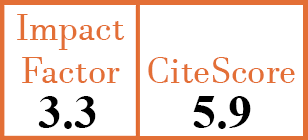Full Papers
Nailfold videocapillaroscopy abnormalities and vascular manifestations in Behçet's syndrome
J.M. Mercadé-Torras1, A. Guillén-Del-Castillo2, S. Buján3, R. Solans-Laque4
- Systemic Autoimmune Diseases Unit, Department of Internal Medicine, Parc Taulí Universitari Hospital, Institut d’Investigació i Innovació Parc Taulí I3PT-CERCA, Universitat Autònoma de Barcelona, Sabadell, Spain.
- Systemic Autoimmune Diseases Unit, Vall d'Hebron General Hospital, Universitat Autònoma de Barcelona, Spain.
- Systemic Autoimmune Diseases Unit, Vall d'Hebron General Hospital, Universitat Autònoma de Barcelona, Spain.
- Systemic Autoimmune Diseases Unit, Vall d'Hebron General Hospital, Universitat Autònoma de Barcelona, Spain. rsolanslaq@gmail.com
CER17710
2024 Vol.42, N°10
PI 2065, PF 2070
Full Papers
Free to view
(click on article PDF icon to read the article)
PMID: 39404484 [PubMed]
Received: 22/03/2024
Accepted : 18/07/2024
In Press: 04/10/2024
Published: 15/10/2024
Abstract
OBJECTIVES:
To evaluate microcirculation abnormalities and their clinical association in patients with BS, especially with vascular manifestations.
METHODS:
A cross-sectional study was carried out using nailfold videocapillaroscopy (NVC) to evaluate the microcirculation in patients with BS.
RESULTS:
A total of 65 patients were included in the study. Thirty-four (52.3%) were men, and 84.6% were European Caucasian. Vascular involvement was present in 24 (36.9%) patients. Qualitative abnormalities in NVC were observed in 47.7% of patients. The most frequent were tortuous and branched capillaries (21.5%), followed by microhaemorrhage (12.3%), enlarged capillary (7.7%) and giant capillary (3.1%). We found a significant relationship between the presence of tortuous and branched capillaries and previous superficial thrombophlebitis (ST) (p=0.025). The presence of ≥2 qualitative abnormalities in NVC was associated with vascular involvement (p=0.031), mainly with venous thrombotic events (p=0.024) and particularly with ST (p=0.003). No specific Cutolo’s pattern was observed. No association was observed between NVC and Raynaud’s phenomenon or ANA, although patients with positive ANA presented more frequent non-specific capillaroscopic abnormalities (p=0.003).
CONCLUSIONS:
The presence of ≥2 qualitative abnormalities in NVC is associated with Vasculo-Behçet. NVC might be a potential tool for early detection of patients at risk of vascular events.


